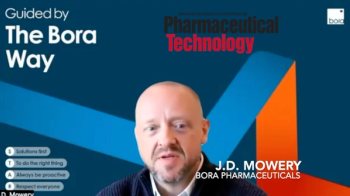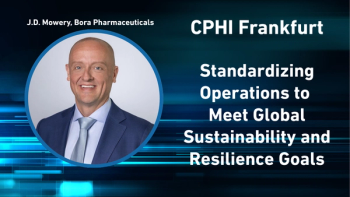
- Pharmaceutical Technology-04-02-2015
- Volume 39
- Issue 4
The Role of Regulatory Advice in Drug Development
Drug developers understand the importance of early communication with regulators, but is EMA providing enough flexibility and support to companies?
Regulators are helping to drive a surge in the development of innovative medicines and their manufacturing processes in Europe by giving advice and encouragement to companies, particularly the small and medium-sized enterprises (SMEs). The support has been especially effective in helping to achieve a big increase in the development of medicines for treating rare diseases. Nonetheless, companies, patients groups, and
healthcare professionals believe that regulatory agencies could do more to assist small innovators, especially in the creation of new production processes. Regulators, as well as drug producers themselves, are also being criticized for not doing enough to tackle the relatively high rate of shortages of medicines for rare diseases, often caused by manufacturing disruptions.
SMEs are now making more use of the various initiatives that the European Medicines Agency (EMA) has introduced to help them develop new medicines. In the four years leading up to 2014, 64% of SMEs working on new medicines requested scientific advice from EMA on their drug development compared with 40% in the previous four years, according to the agency’s annual SME report (1). This rise was accompanied by a jump in the proportion of successful applications by SMEs for marketing authorizations, from 49% in 2007-2010 to 62% in 2011–2014.
At the same time, involvement of drug developers and drug producers in the process for orphan medicine approvals, many of them developed by SMEs, is growing rapidly. The number of applications for orphan product designation rose 63% in 2014 to 327 applications compared with 2013, according to figures from the EMA’s committee for orphan medicinal products (COMP) (2). This figure was more than three times higher than 10 years ago. Allocations of orphan medicine designations went up 18% to 160, while those actually gaining marketing authorizations rose 71% to 12 (2).
Advanced therapy medicinal products
There is also a rising number of leading edge innovations categorized as advanced therapy medicinal products (ATMPs), made from tissues, genes, or cells, which may offer ground-breaking new treatment opportunities for many conditions. EMA’s committee for advanced therapies (CAT) has issued more than 100 recommendations for the classification of innovative medicines as ATMPs (3). Of new medicines under development for the treatment of rare diseases or that are categorized as ATMPs, micro-, small-, or medium-sized companies account for half, according to EMA (1). Yet, while SMEs are becoming major drivers behind medicine innovation in Europe, they are still struggling to gain authorizations, at least at the level of centralized approvals. The number of orphan medicine approvals has actually been decreasing as a proportion of designations. On the basis of COMP’s statistics, the proportion of approvals to designations was 5.6% in the five years prior to 2014 compared with 9.2% in the previous five years (2).
“The development of orphan medicinal products remains a risky undertaking for those investing in the research, development, and commercialization of these treatments,” says Miriam Gargesi, director of healthcare biotechnology at the European Association of Bio-Industries (EuropaBio), Brussels. “Due to the rarity of the diseases, there is often only partial knowledge of the mechanisms of the diseases, scarce medical expertise, and recruitment for clinical trials is a challenge.”
Advisory services
In addition to EMA, national agencies in Europe are running advisory services to assist companies in the development of new medicines and processes. Large companies and SMEs are being encouraged by their national authorities to contact them as early as possible in the development of medicines to ensure that their manufacturing processes will not create regulatory obstacles, which could be expensive to overcome.
The United Kingdom’s Medicine and Healthcare Products Regulatory Agency (MHRA) in London has published a series of case studies describing the assistance it has been giving to companies in the process development and preclinical stage of medicine innovation. For example, the agency has been advising OxSonics, Oxford, England, a spin-off from Oxford University, on the quality assessment and controls of particles for use in a technology for the enhanced delivery of anti-cancer drugs deep into solid tumors. Within the university itself, the MHRA has also been helping the Jenner Institute and the university’s clinical biomanufacturing facility in the development and production of a new malaria vaccine through the bio-engineering of a viral vector.
The agency has also been giving guidance to companies in the design of new sites and plants, sometimes even prior to an investment decision. One of these investments has been a £120 million ($184 million) plant at Macclesfield, northeast England, in which AstraZeneca is making a sterile implant for treating cancer, involving multiple aseptic stages.
“It was essential that we had a good understanding of the regulatory expectations very early on in the process to understand the impact on the design, cost, and time lines in proposing the business case for the Macclesfield location,” explains John Parker, AstraZeneca’s UK quality director.
Quality issues
Much of the advice being offered by EMA and national agencies is focused on helping companies, particularly SMEs, to prepare their medicines properly for clinical trials where most new products fail. But for a large proportion of producers, quality issues, often linked to the manufacturing process, are a major issue.
In dossiers for marketing authorization applications by SMEs in 2011–2013, 46% of major objections by regulators were related to quality issues compared with 47% that were because of clinical efficacy and safety matters, according to an EMA investigation, the results of which are published in its SME annual report (1). Of applications for biologics, 51% of objections were on quality topics while for chemical entities, it was 41%.
Among the most frequent problem areas was the quality documentation related to manufacturing process validation, said the EMA report (1). Other issues included control and/or characterization data of the active substance or the finished product, stability, compatibility, and shelf life data and pharmaceutical development.
A joint study (4) published by the Deerfield Institute, the research arm of the Deerfield investment organization, and EuropaBio, found that SMEs welcomed regulatory scientific advice because it provided “opportunities to get input on manufacturing processes, [which was] particularly important for complex products that involve newer technologies, such as genetic engineering.” The companies, however, complained about a lack of flexibility among the agencies, particularly EMA, according to the report which was based on interviews with companies, regulators, and reimbursement authorities.
EMA, for example, wanted specific rather than open questions, making it difficult for companies to work out what would be the right questions. Compared with the advice from local agencies, “the EMA process can be lengthy, formal, and cumbersome,” the report said. Apart from informal exchanges in pre-submission meetings, “there are not enough opportunities for discussion with EMA reviewers,” the report added.
Mitigating drug shortages
SMEs and larger companies have been criticized for not doing enough to ensure the reliability of their production processes once they start making commercial quantities of their medicines. This is especially the case with treatments for rare diseases, for which there have been a disproportionate level of shortages caused often by manufacturing failures. A group of European healthcare NGOs, led by EURORDIS, a rare diseases patients group, has argued that the incidence of drug scarcities has become so serious that supply shortage risk assessment plans should be provided by manufacturers before their medicines are granted marketing authorizations.
“The current risk management plans submitted by marketing authorization applicants do not contain information on risks related to manufacturing issues or shortages as this is not legally required,” explains Francois Houyez, EURORDIS’ health policy advisor. “Applicants could submit information on these aspects on a voluntary basis, but to make it mandatory would require legal changes.”
Some companies argue that the solution to shortages could be more thorough GMP inspections. “We question whether more inspections would help and regulators don’t seem to think so either,” says Houyez. “Thinking that more inspections would reduce the risks of shortages, even with an army of inspectors worldwide, is not the way forward.”
EMA believes that the industry should be more pro-active in the assessment and management of the risks of shortages not only at the production stage but throughout the supply chain. Industry associations have a role to play in the promotion of information sharing and the development and sharing of the methodologies for risk assessments, Brendan Cruddy, EMA’s head of manufacturing and compliance, told a rare diseases conference in Berlin in 2014 (5). “Industry, don’t compete. Collaborate,” said Carla Hollak, a professor in metabolic diseases at Amsterdam University’s Academic Medical Centre, at the same meeting. The development of innovative medicines and production processes is becoming dependent not only on guidance from the regulators at an early stage, but the industry also needs to work more closely together to ensure the efficiencies of their supply chains.
References
1. EMA, Annual Report from the SME Office-2014, EMA/699351/2014 (London, Feb. 3, 2015).
2. EMA’s Committee for Orphan Medicinal Products (COMP), Report on the Review of Applications for Orphan Designation, EMA/COMP/737192/2014 (London, Dec. 12, 2014).
3. EMA, “EMA releases revised guidance on advanced-therapy classification for public consultation,” Press Release, June 6, 2014.
4. Deerfield Institute-EuropaBio Survey, “Regulatory and HTA scientific advice for small and medium enterprises,” March 2015.
5. B. Cruddy, “EMA initiatives on product shortages due to manufacturing/GMP and quality issues,” presentation at European Conference on Rare Diseases & Orphan Products (Berlin, May 2014).
Article DetailsPharmaceutical Technology
Vol. 39, No. 4
Pages: 20-22
Citation: When referring to this article, please cite it as S. Milmo, “The Role of Regulatory Advice in Drug Development,” Pharmaceutical Technology39 (4) 2015.
Articles in this issue
over 10 years ago
Evaluating Package Integrityover 10 years ago
Designing Trouble-Free Freeze-Drying Processesover 10 years ago
Modernizing Scale-Upover 10 years ago
Meissner Biocontainer Increases Customizabilityover 10 years ago
Ross Discharge System Increases Efficiencyover 10 years ago
West Vial Seal Reduces Risk of Contaminationover 10 years ago
Quattroflow Diaphragm Pump Ensures Product Containmentover 10 years ago
Industry Expert Q&A with David BarrettNewsletter
Get the essential updates shaping the future of pharma manufacturing and compliance—subscribe today to Pharmaceutical Technology and never miss a breakthrough.





